Київ

Ukrainian capital and historic city on the Dnieper

Capital of Ukraine and one of the most important urban centres of eastern Europe, Kyiv has seen its fair share of upheaval throughout its history, since being founded in the 5th century AD. It was captured by the Vikings in the 9th century, and variously controlled by Lithuania, Poland and Russia before becoming part of the Soviet Union from 1922. Fully independent since 1991, the early part of 2014 saw a popular revolution centred around the city’s Independence Square, which had barely subsided by the time we arrived. A full-scale Russian invasion was mounted in 2022, which was quickly and successfully repelled from Kyiv itself.
The pretext for our visit to Kyiv was, naturally, to eat chicken Kyiv, a lofty goal which we achieved but only on our last night in town. There were of course also various higher-culture drivers for our lads’ holiday to the Ukraine, including a visit to Chernobyl and Pripyat. As the trip drew nearer and the situation deteriorated further, it was touch-and-go whether we’d actually make it, considering the security situation. As it happened, Kyiv had calmed considerably by the time we arrived in late March 2014, with focus moving to Crimea and its annexation by Russia two days before our arrival in the country. It was a highly successful trip, spent exploring the beautiful city in the unseasonably warm spring sunshine.
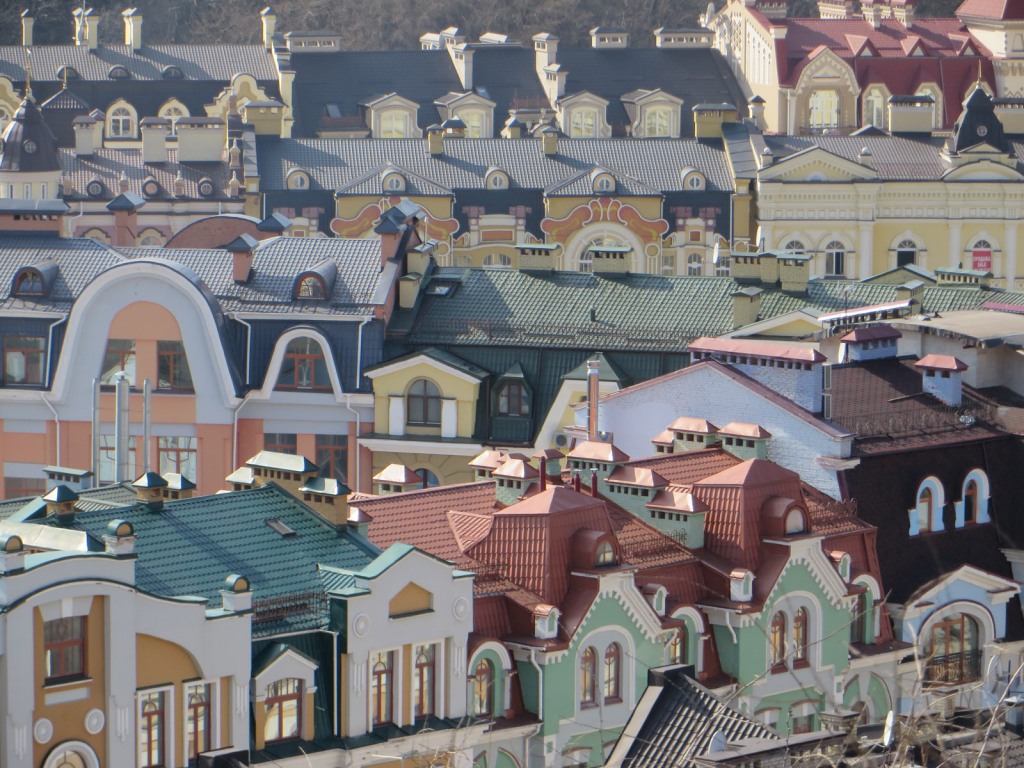
Colourful rooftops of the district of Poshtova, which despite our schoolboy translations, actually refers to the post office in the area. We stayed at Dream Hostel in this gentrified district, and it was one of the best hostels I’ve ever stayed in.
St Andrew’s Church looms over Poshtova in a very eastern fashion. The church was built in the 1800s and sits at the top of Andriyivska Hill. We wandered up there past the market stalls selling all manner of Soviet memorabilia.

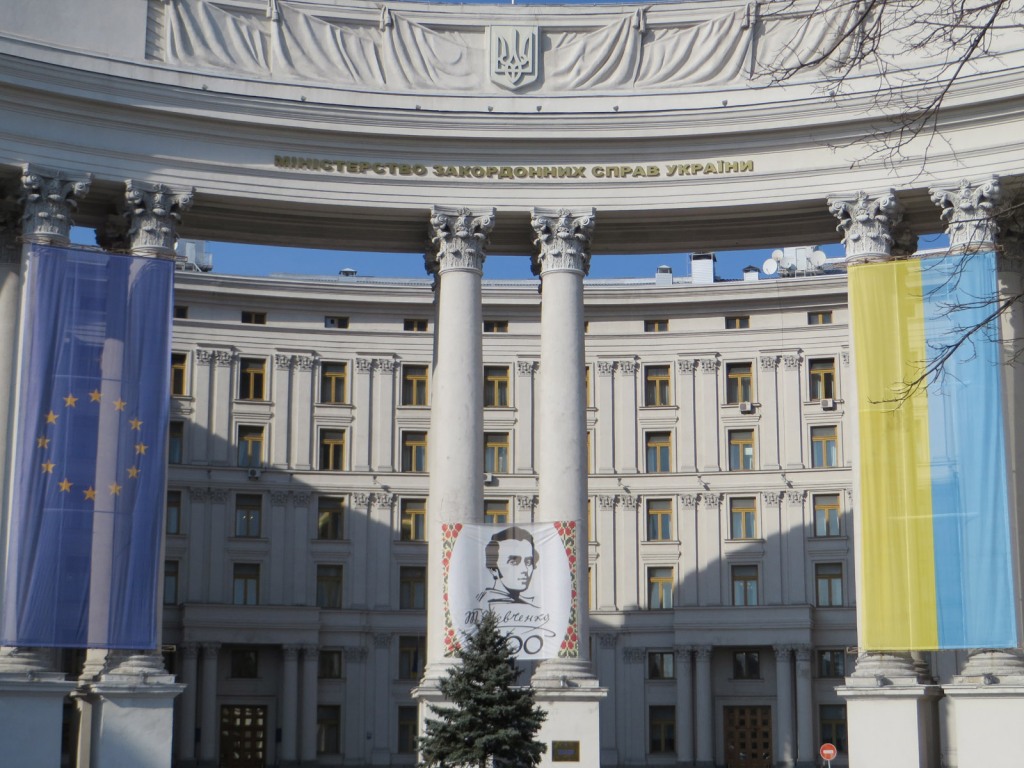
The Ministry of Foreign Affairs, at the top of Kyiv Funicular Railway, seems to have a picture of none other than Rabbie Burns displayed with the national flag and the EU flag. Directly opposite are the golden domes of St Michael’s Golden Domed Monastery, seen in the header image.
On the approach to Independence Square, there were seas of flowers and little coloured glass candle holders, in memorial to those who lost their lives in the revolution a few weeks earlier.


Independence Square is the centre of the city, and was the centre of the 2014 Ukrainian Revolution. Also known as Maidan locally, it was still heavily occupied when we wandered through the makeshift tents and barricades, with a peaceful but slightly uneasy feel.
A message spelled out in paving bricks in Maidan, using the colours of the national flag. My Ukrainian is not very good, but the words I recognise are “stop propaganda” and “no fascism”.

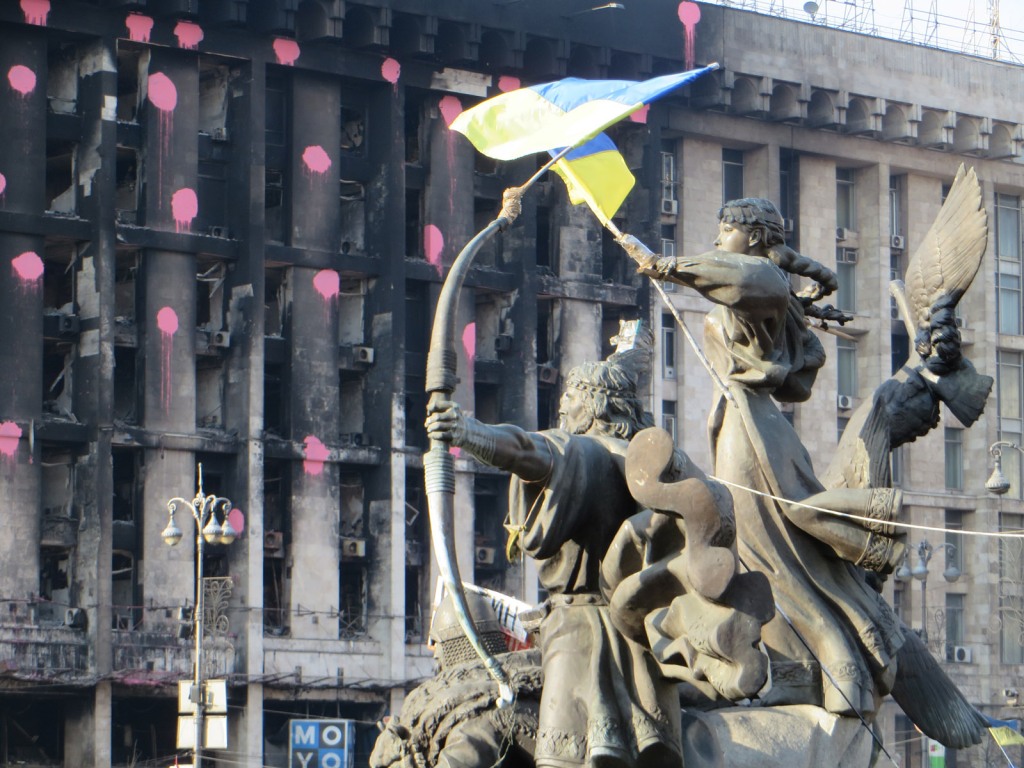
The founders of Kyiv: Kyi, Shchek and Khoryv, stand in effigy in front of the Trade Unions Building. It was set ablaze during one of the fiercest nights of revolutionary fighting in February 2014, and had since been paintballed pink for some reason.
During the battles on the streets, paving blocks were ripped from the ground to build barricades and use as missiles.


A display of bullet casings and other objects found in Independence Square that had been fired at protestors. The text мирна зброя беркуту (mirna zbroya byerkutu) translates as “the peaceful weapons of the Special Police” (Berkut).
Looking east from Maidan towards the Hotel Ukraine, and the winged statue on top of the column, which remained untouched during the revolution. The hotel was originally designed in a similar style to Stalin’s Seven Sisters of Moscow, but was significantly downgraded following Stalin’s death in 1953 and the resultant political shift away from grandeur to more utilitarian designs. It finally opened in 1961 under the name Hotel Moscow.

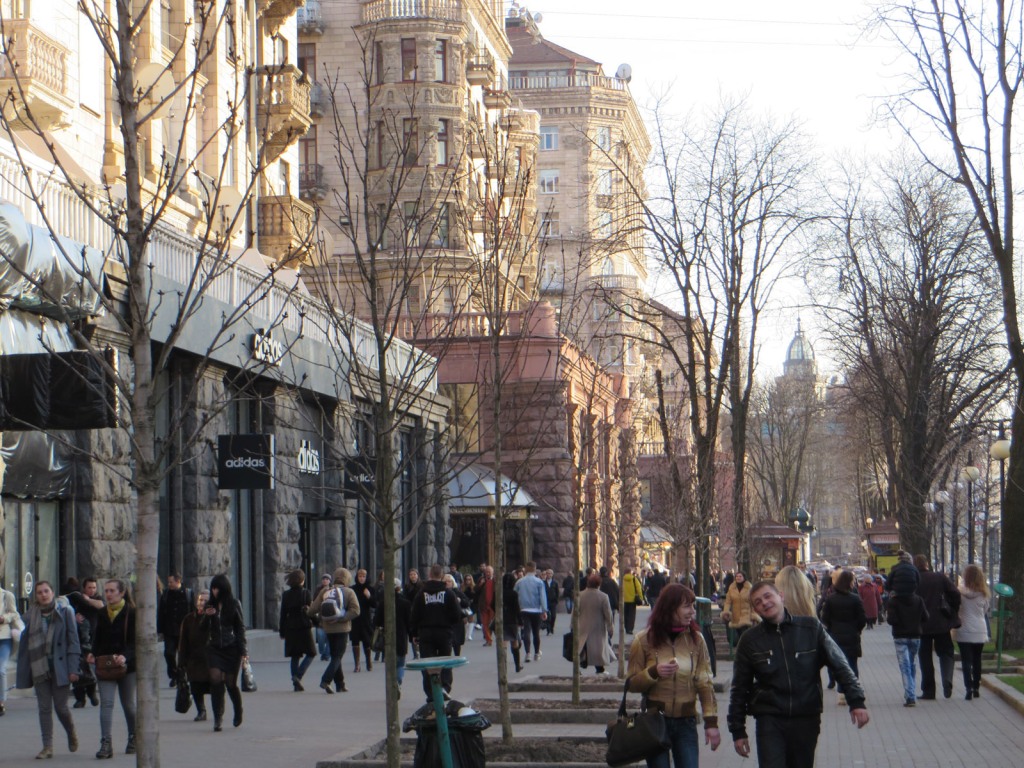
Just a few yards from Maidan, Khreshchatyk Street transforms from revolutionary battleground to Kyiv’s equivalent of the Champs-Élysées.
We descended into the Kyiv metro system, down the typically deep tunnels of Soviet-built metro systems, designed to double as nuclear bomb shelters. Kyiv’s was still the world’s deepest metro at the time of our visit, and these are some of the world’s longest escalators, descending over one hundred metres below ground.


Things were much more cheerful at the Oleg Antonov State Aviation Museum, a playground for any aviation nerd such as the one seen getting into character here and about to board this Aeroflot Ilyushin IL-62 from 1972.
Upon seeing the MI-26 helicopter, I exclaimed “that’s the biggest helicopter I’ve ever seen”. And indeed, it is the biggest helicopter the world has ever seen. It has eight rotor blades and can carry ninety conscripts or twenty tonnes of cargo. Spot the tourist in front of its bulk.

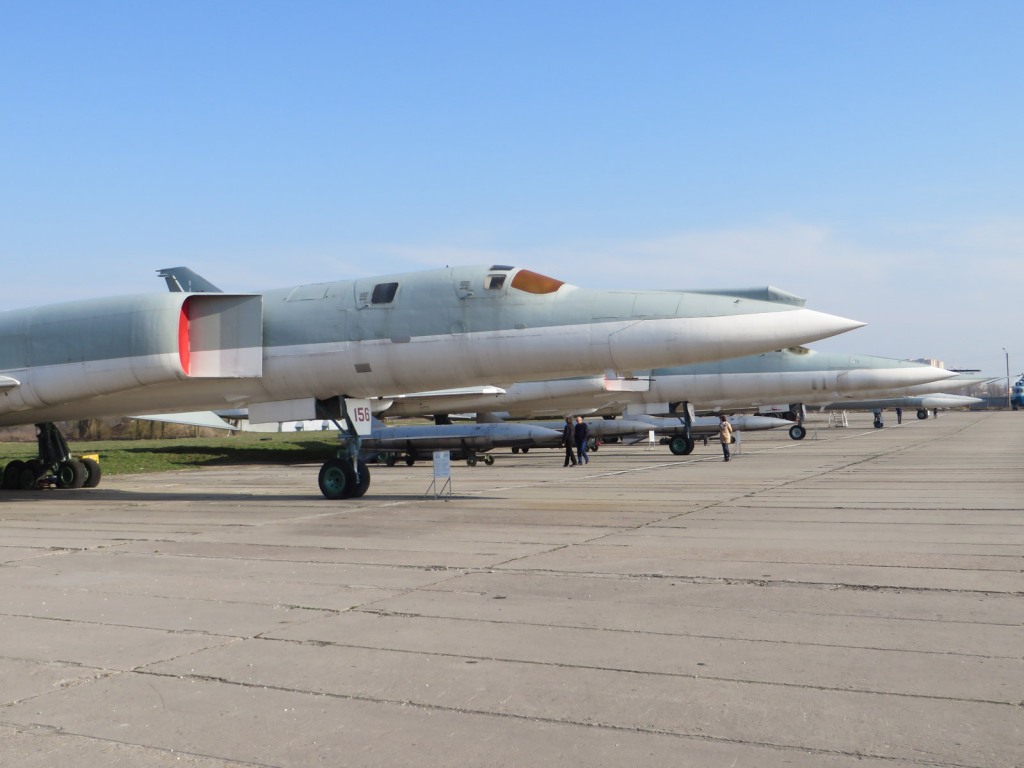
A series of supersonic nuclear bombers sit quietly on the apron. Machines such as the TU-22M seen here, could deliver their payload over four thousand miles away, peaking at a speed over Mach 1.8.
The Soviets had a knack for resplendent inelegance in design, sacrificing aesthetics for function at every possible occasion. This is an example of one of the most bizarre looking aircraft in the museum, an Antonov AWACS aircraft looking like an Airfix model gone wrong, or one that I’d built.
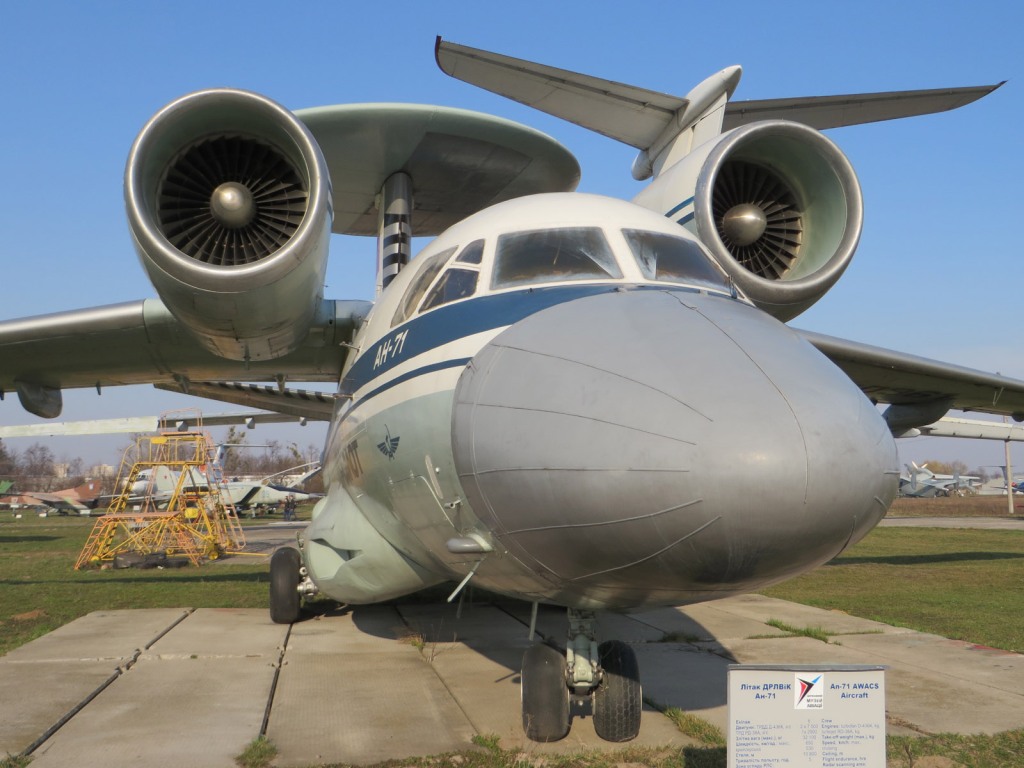

Back in town, I spotted this plaque of none other than Leo Tolstoy on a Kyiv street corner. Being as literally challenged as I am, while I can tell you that he wrote “War and Peace”, I can’t claim to have read it (any of it) or know what his connection to Kyiv was, if any.
The Presidential Palace was being conspicuously guarded, and was looking in pristine condition when we wandered past.


Opposite the Presidential Palace is the House with Chimaeras, an obsessively designed edifice which also goes by the moniker Gorodetsky House, named for its architect. He has been dubbed the Gaudi of Kyiv.
Back on Khreshchatyk Street, the catchily-named Budynok Z Zirkoyu is an impressive example of a Stalinist apartment building.


Golden spires of the Church of the Nativity of the Blessed Virgin Ukrainian Orthodox church in a park by the Dnieper River.
I don’t like Russian dolls, because they’re just so full of themselves. Properly known as Matryoshka dolls, these were for sale in a market place on a Sunday morning. The more you pay, the more doll stages you get.
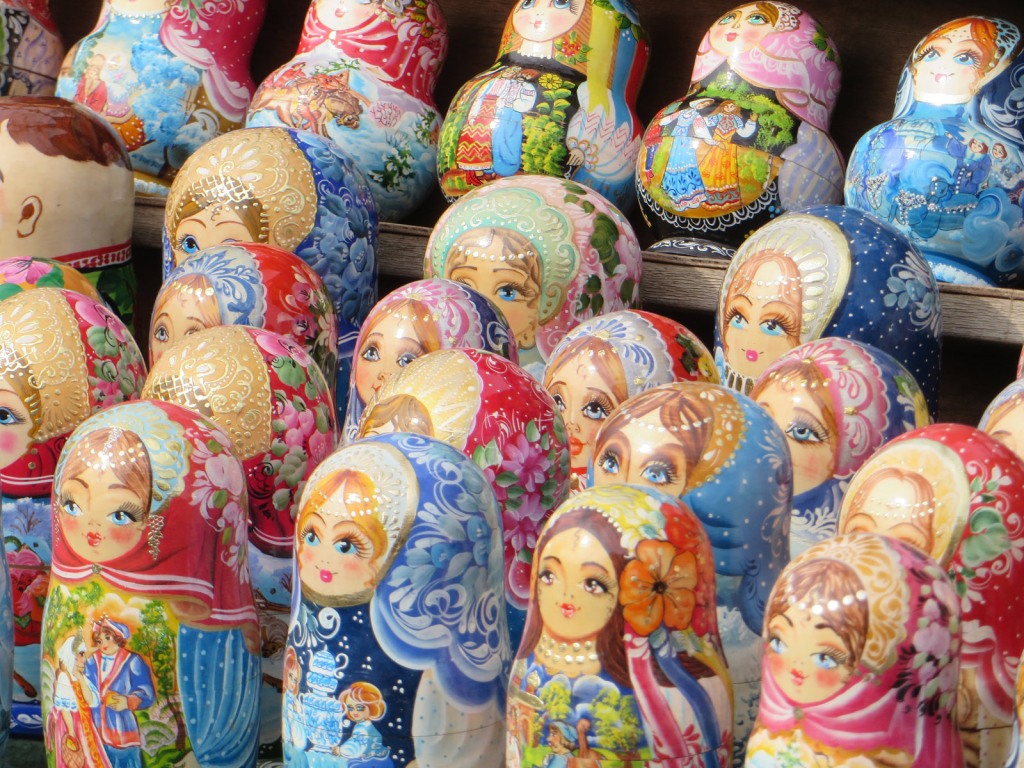

Keeping the tankways spick and span in front of the Ukrainian Museum of the Great Patriotic War. Reference to the “Great Patriotic War” was outlawed in 2015, and it is now known as the National Museum of the History of Ukraine in the Second World War.
I always like the energy and determination in the faces of communist statues, staring boldly ahead into the future. I’ve also seen great examples in Beijing and Pyongyang, and these are no exception.


Rodina Mat, the Motherland statue, presides over Kyiv on the shores of the Dnieper River. She is cast in stainless steel, and at the time of my visit still carried the emblem of the Soviet Union on her shield. This was replaced with Ukraine’s coat of arms in 2023, and the statue was renamed Mother Ukraine.
Created 2014 | Updated 2024
